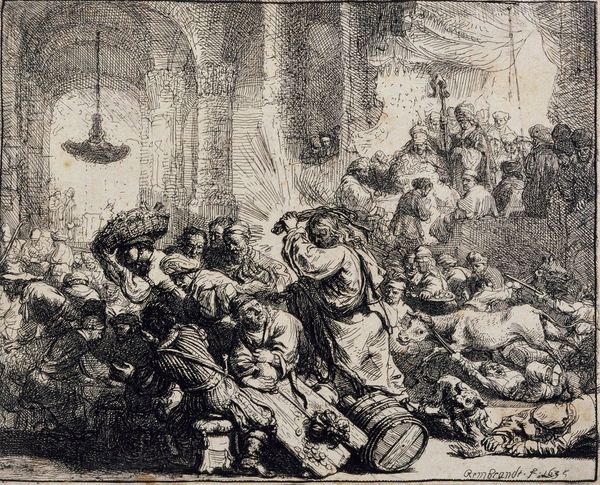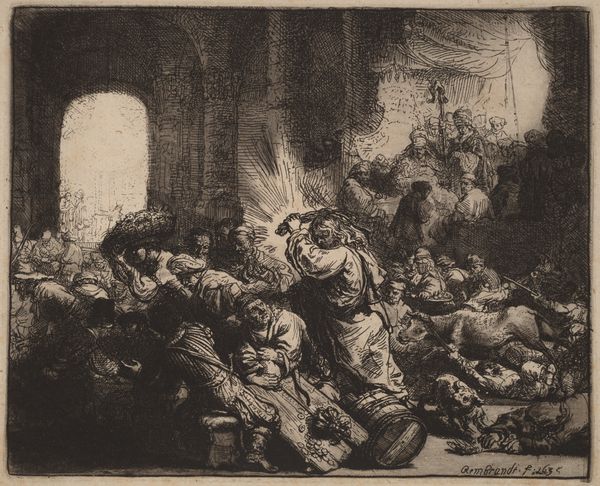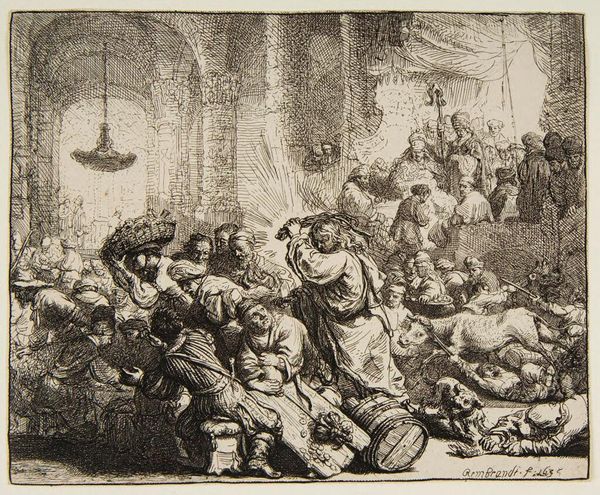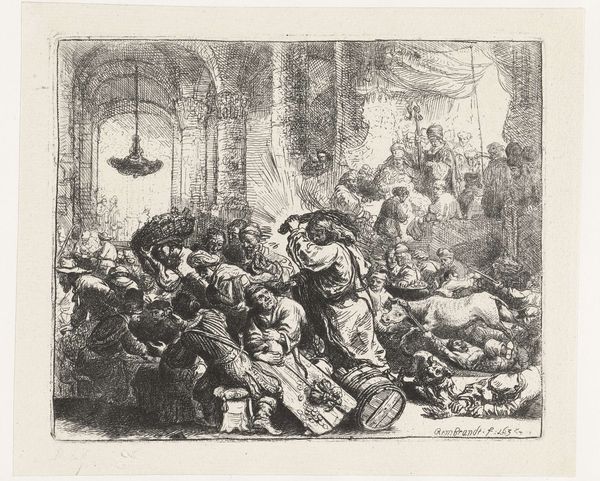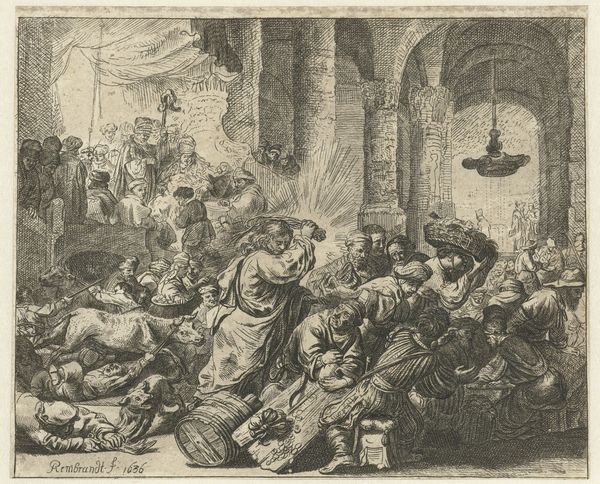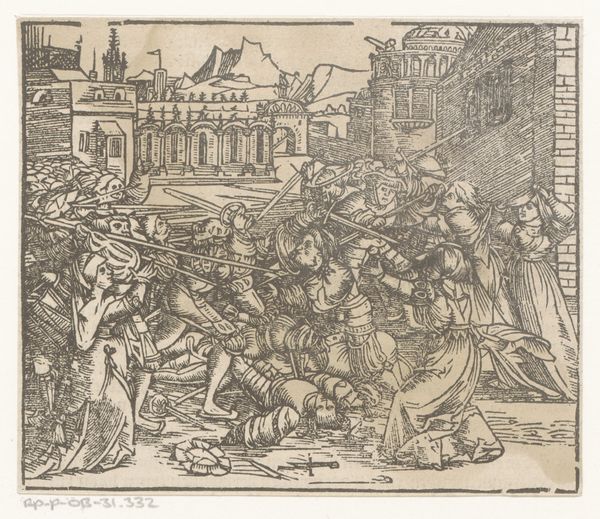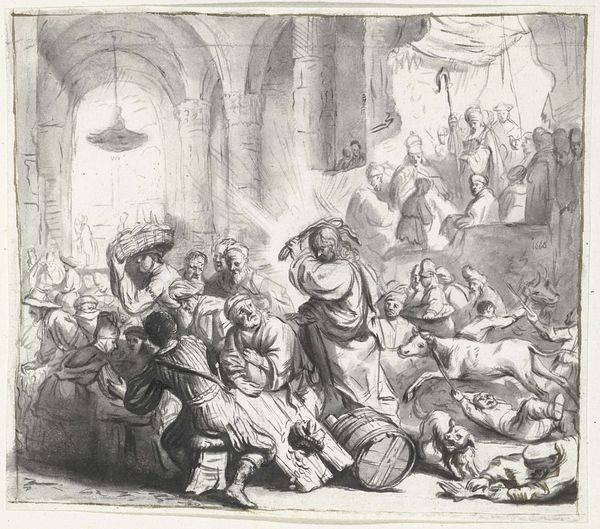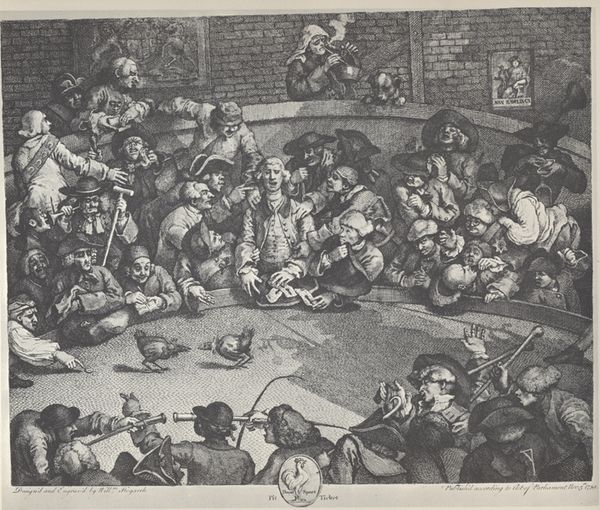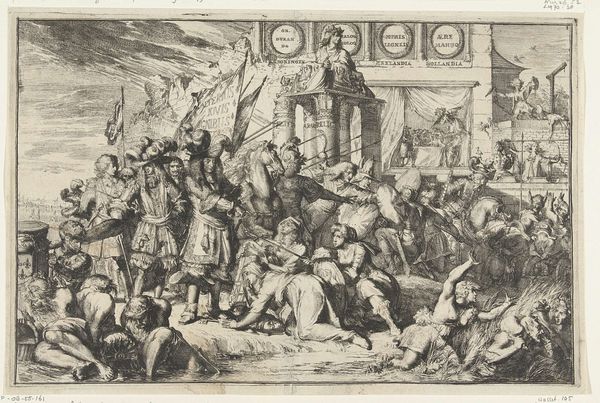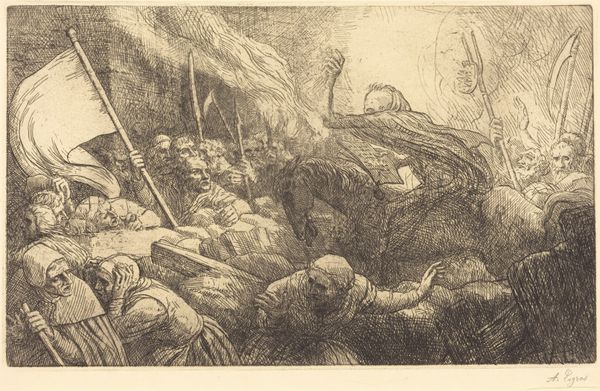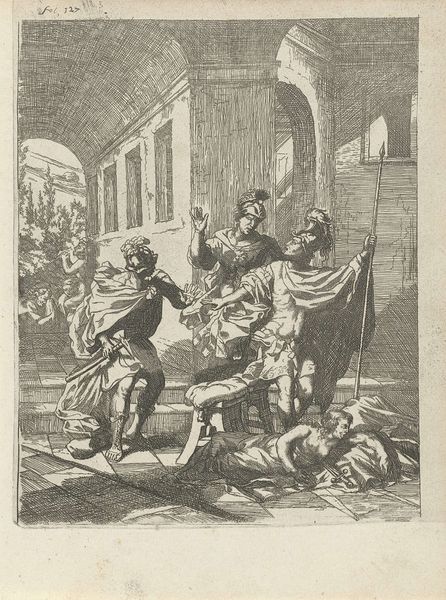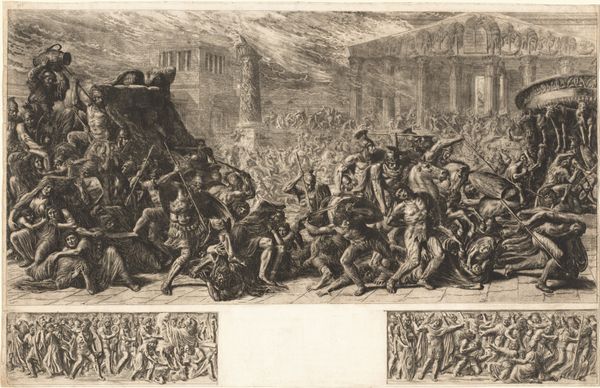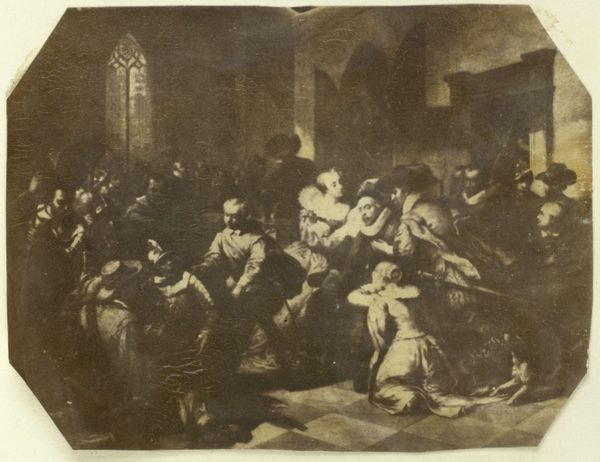
print, etching, ink
#
baroque
#
ink painting
# print
#
pen sketch
#
etching
#
figuration
#
ink
#
history-painting
Dimensions: height 136 mm, width 168 mm
Copyright: Rijks Museum: Open Domain
Curator: This is Rembrandt van Rijn’s etching, "Christ driving the money changers from the temple," created in 1635. The print depicts a scene of chaos and divine anger within a temple setting. Editor: My first thought is just how visceral and immediate it feels, despite being in monochrome and relatively small in scale. There’s a sense of unrestrained energy. Curator: Absolutely. Rembrandt’s masterful use of etching creates incredible depth and drama. Consider the socio-political context of the 17th century—religious authority, economic systems—and how they intertwine within the image. The public role of art at the time was to both edify and also, at times, subtly critique established power. Editor: The composition emphasizes Christ’s dynamic intervention, his body a diagonal force cutting through the horizontal rows of seated merchants. It certainly speaks to the hypocrisy embedded within religious institutions. Do you think he intentionally connects this historical scene with contemporary debates on religious corruption? Curator: It’s impossible to say definitively what Rembrandt intended, but we can certainly explore that possibility. Amsterdam at the time was a bustling center of trade and religious reformation, so the critique of corruption certainly resonates with the anxieties of the era. Look at how he uses light to focus on Christ’s figure and the startled reactions of the money changers. It highlights the disruption of established norms. Editor: And the expressions! It is interesting to see a spectrum from fear to shock, guilt to maybe even indifference in some figures' faces. What a reflection on different responses to authority and moral questioning. The prostrate figures feel particularly important. Curator: A brilliant observation. By situating the narrative within a wider range of social reactions, Rembrandt offers a more complex commentary than simple condemnation. The scene becomes not just about one man's act of defiance but the varying consequences for those caught in the crossfire. Editor: So, looking closely has pushed me to question not just the actions within the image, but how that act of questioning itself becomes part of its historical significance. Curator: Exactly! That’s precisely what makes Rembrandt such an enduring force, his art challenges us to see the complex social and political forces at play even in these historical scenes.
Comments
No comments
Be the first to comment and join the conversation on the ultimate creative platform.
